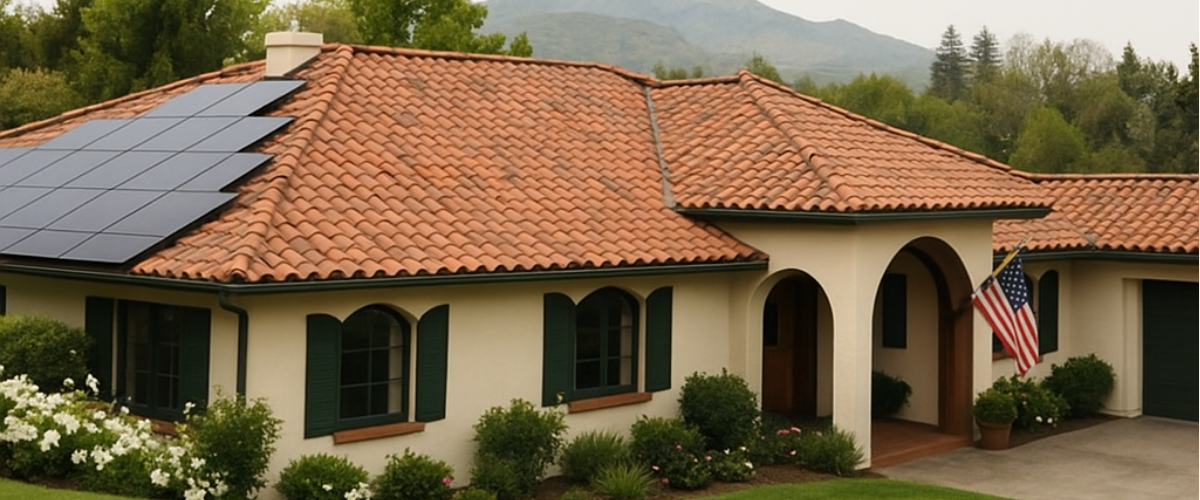Home Solar Power System Basics: How They Work

Solar and Roofing Advisor
Curious about harnessing the sun's power for your home? Discover the basics of home solar power systems, how they work, and the incredible benefits they offer.

As the world shifts towards renewable energy sources, understanding the basics of home solar power systems has become essential for homeowners looking to reduce their carbon footprint and energy bills. This article explores how home solar power systems work, offering insights into their components, functionality, and benefits.
Understanding Home Solar Power Systems
Home solar power systems harness the sun's energy and convert it into usable electricity. These systems are composed of several key components that work together to provide clean, renewable energy.
Key Components of a Solar Power System
• Solar Panels: Solar panels are the most visible part of a solar power system. They capture sunlight and convert it into direct current (DC) electricity.
• Inverter: The inverter is crucial as it converts the DC electricity generated by the solar panels into alternating current (AC) electricity, which is used by household appliances.
• Mounting System: This system secures the solar panels to the roof or ground, ensuring they are positioned correctly to maximize sunlight exposure.
• Battery Storage: Optional in many systems, batteries store excess electricity generated during the day for use at night or during power outages.
• Monitoring System: This system tracks the performance and efficiency of the solar power system, providing real-time data on energy production and usage.
How Home Solar Power Systems Work
The process of generating electricity from solar power involves several steps:
• Sunlight Absorption: Solar panels absorb sunlight and convert it into DC electricity through photovoltaic cells.
• Conversion to AC Electricity: The inverter takes the DC electricity and converts it into AC electricity, making it compatible with home appliances.
• Electricity Distribution: The converted AC electricity is distributed throughout the home to power devices and appliances.
• Excess Energy Management: Any excess electricity can be stored in batteries or fed back into the grid, depending on the system setup and local regulations.
Practical Examples of Solar Power Usage
Homeowners across the globe are increasingly adopting solar power systems. For instance, a family in California installed a solar power system that reduced their electricity bills by over 50%. This system included battery storage, allowing them to use solar energy even during cloudy days and at night.
In another example, a rural household in Texas opted for a grid-tied solar power system, which enabled them to sell excess electricity back to the grid, further offsetting their energy costs.
Benefits of Home Solar Power Systems
• Cost Savings: Solar power systems can significantly reduce electricity bills and, in some cases, eliminate them altogether.
• Environmental Impact: By using renewable energy, homeowners can decrease their carbon footprint and contribute to a cleaner environment.
• Energy Independence: Solar power systems provide a degree of energy independence, reducing reliance on the grid and protecting against rising energy costs.
• Increased Home Value: Homes equipped with solar power systems often have higher property values and are more attractive to potential buyers.
As the demand for renewable energy grows, understanding the basics of home solar power systems becomes increasingly important. By investing in solar power, homeowners can enjoy cost savings, energy independence, and a reduced environmental impact.
For those interested in exploring solar energy solutions, US Power offers comprehensive services to help you transition to renewable energy. Contact US Power today to learn more about how you can benefit from a home solar power system.
Related Articles
Our Related Blogs
Understand typical daily electricity usage for California homes to plan solar.
Find out which inverters and batteries will work best with Qcells solar panels.
Panels need storage and smart tech to meet rising energy needs and grid demands.
Our Solar and Roof Brand Partners








We empower communities and businesses to harness clean, renewable solar energy solutions that drive sustainable growth.
Ready to Own Your Power? Call us today!
818-650-8010
Copyright © 2025 US Power - Axia by QCells. All Rights Reserved.
Privacy is important to us, so you have the option of disabling certain types of storage that may not be necessary for the basic functioning of the website. Blocking categories may impact your experience on the website.
Essential
These items are required to enable basic website functionality.
Personalization
These items allow the website to remember choices you make (such as your user name, language, or the region you are in) and provide enhanced, more personal features.
Marketing
These items are used to deliver advertising that is more relevant to you and your interests.
Analytics
These items help the website operator understand how its website performs, how visitors interact with the site, and whether there may be technical issues.
We and our third-party partners use cookies and other technologies to enhance and track your experience on this site, conduct analytics, and personalize marketing to you. By using the site, you agree to our use of these technologies, including recording and monitoring your interactions with the site.
Get an instant solar estimate using satellite!










